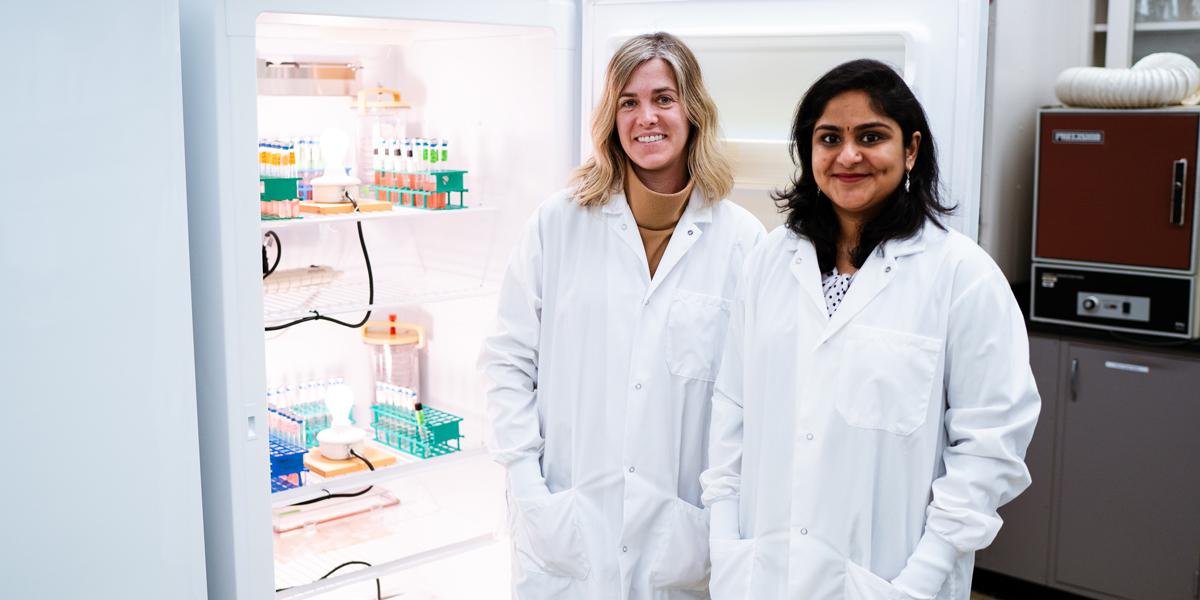
Mathangi Soundararajan knows a thing or two about space and isn’t above using her knowledge to impress her peers. “I have this party trick,” she says. “I can talk about the atmospheric composition of Mars off the top of my head."
While it may seem unusual for a biologist to take such a deep interest in lifeless environments, Soundararajan’s interest converges in the emerging field of space biology. She spent three years working with the NASA’s Ames Research Center synthetic biology team after completing her master’s degree in biochemistry at Utah State University.
The first-year Microbiology, Immunology, and Cancer Biology Ph.D. student will apply that experience and expertise to a new NASA-funded project in Kathryn Fixen’s lab. The research team will spend the next year studying how the nitrogen fixation process changes in the lunar surface, or regolith, where nitrogen is basically non-existent.
“The first thing we need to show is whether or not we can even carry out nitrogen fixation in the lunar regolith,” says Fixen, an assistant professor in the Department of Plant and Microbial Biology who studies nitrogenase, the enzyme responsible for nitrogen fixation. “We have lots of bacterial strains that should let us ask the question of whether a particular metal needed is available for them to use or not.”
The project falls into the category of “space biology,” which focuses on how living organisms function in space. As space travel and exploration continues to gain momentum, the need to develop strategies for sustaining life does as well.
While nitrogen is abundant on Earth, making up nearly 80 percent of our atmosphere, it’s not readily accessible. It happens largely through human intervention (think fertilizer) and microbes. Bacteria play a leading role in delivering nitrogen to plants and could potentially reprise that role on other planets, but little is known about how that might play out.
The research team will look at nitrogen fixation on the lunar surface using stimulants developed by NASA. “[Lunar regolith] is similar to soil in some ways, but in other ways it's very different,” says Fixen. One thing it does contain is metals, which could provide a path forward since nitrogenase, the enzyme responsible for nitrogen fixation, requires certain metals.
The farther we go away from Earth, the more we'd need to be Earth independent, Soundararajan points out. She notes that chemical methods aren’t going to be enough to produce the building blocks for the medicine and food needed to sustain life in inhospitable environments far from home.
“We know life can survive in some pretty extreme conditions,” says Soundararajan. “The bacteria Dr. Fixen works with can grow with just two percent nitrogen. For me, that was a eureka moment since understanding how those bacteria survive will help us improve any technologies we were to develop for supporting plants in those conditions.” - Stephanie Xenos